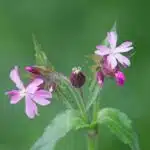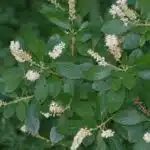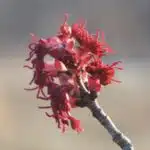The red tip photinia is a beautiful flowering evergreen shrub that is commonly used in landscaping and garden design. Known for its striking deep red foliage, this eye-catching plant has become a popular choice for homeowners looking to add a splash of color to their gardens. However, taking care of the red tip photinia can be somewhat tricky if you don’t know what you’re doing—but have no fear! Like everything else in life, with the right approach and some TLC, you can ensure your photinia thrives for years to come. So put on your gardening gloves and get ready; we’re about to delve into the world of caring for these stunning plants!
It doesn’t matter whether you’re an experienced green thumb or just getting started on your gardening journey—with the right information, anyone can learn how to grow and care for a red tip photinia. And it all starts with location. To get off on the right foot, it’s important to pick an area in your garden that will give your photinia plenty of light and room to grow. Once that’s taken care of, you’ll be halfway there!
Now let’s jump into the nitty gritty details of growing this cheerful shrub: from soil composition and water requirements to pruning tips and beyond. With this guide as “your trusty sidekick,” as they say, caring for your red tip photinia will be like a walk in the park (or should we say garden)!
Overview Of Red Tip Photinia
Red Tip Photinia is a stunning evergreen shrub that adds both height and color to any garden. Its glossy green leaves are adorned with vibrant red tips and its white springtime blossoms bring beauty and life to your outdoor space. This captivating plant is as easy to care for as it is beautiful – making it the ideal choice for novice gardeners.
The Red Tip Photinia thrives in full sunlight, but it can also tolerate partial shade. It has an upright form, growing up to 15 feet tall, and requires frequent pruning to keep its shape – which makes it a great choice for hedges or topiary. As a hardy shrub, it’s resistant to many common pests and diseases, but regular fertilizing will help ensure healthy growth and vibrancy of the foliage.
Overall, Red Tip Photinia is a stunning addition to any garden. Its bright colors add contrast and texture while its low maintenance needs make it an ideal option for beginners and experienced gardeners alike. Whether planted in groups or on its own, this gorgeous evergreen will be sure to bring life into any outdoor area with ease!
Ideal Growing Conditions For Red Tip Photinia
Red tip photinia is an attractive evergreen shrub that is a great addition to any landscape. It’s hardy, easy to care for, and thrives in many conditions. In order to get the most out of this plant, though, it’s important to understand its ideal growing conditions.
This shrub prefers well-drained soil and full sun or partial shade exposure. When planted in an area with plenty of direct sunlight, red tip photinia will produce deep green foliage and abundant blooms during the spring months. When located in partially shaded areas, the foliage will still be lush but won’t bloom as much. In either case, it’s important for this shrub to receive at least four hours of direct sunlight each day.
Watering requirements vary based on location and time of year. During summer months and periods of extreme heat, red tip photinia should be watered deeply once per week. For areas with mild climates or cooler temperatures, watering can be done every two to three weeks instead. As with any plant, overwatering is always a risk; make sure not to water too frequently or else you may end up with root rot or other problems! With adequate water and enough sunshine, red tip photinia can thrive in any garden setting – so let’s dive into how to get the planting process started!
How To Plant Red Tip Photinia
Planting red tip photinia is an absolute breeze! It’s almost like the plant was designed with gardeners in mind. With its bright foliage and adaptable growing conditions, red tip photinia practically begs to be planted in any garden.
Preparing the soil for planting is straightforward and simple. First, you’ll need to dig a hole about twice as wide as the root ball of the photinia shrub. Once that’s done, you’ll want to mix organic content into the bottom of the hole, such as compost or peat moss. This will provide nourishment for your plant and help it grow strong roots. Next, place your photinia shrub in the hole and fill it up with soil until it reaches just above ground level. Make sure that your photinia shrub has plenty of room to spread out its roots without becoming too crowded in its new home. Finally, water your shrub deeply after planting to give it a good start in life!
With just a few easy steps, you can successfully plant red tip photinia in your garden and enjoy many years of beautiful blooms and foliage. Now that you’ve gotten started on planting this gorgeous variety of photinia, there are still some other important aspects to consider when caring for this shrub – namely its soil requirements. Understanding what kind of soil this particular species needs will ensure that your red tip photinia grows healthy and happy all year round!
Soil Requirements For Red Tip Photinia
Growing Red Tip Photinia requires certain soil conditions for optimum health and growth. It is important to understand these requirements before planting so that you can be sure the shrub gets off to the best start possible.
The ideal soil for this shrub should be loamy and moist, but not soggy. It should also have a slightly acidic pH of 5.0 to 6.5, although most soils in the range of 4.5 to 7 are considered acceptable. Additionally, the soil should have good drainage with plenty of organic matter incorporated into it.
Red Tip Photinia prefers an environment where its roots can remain cool and moist while still receiving adequate oxygen levels through proper drainage. When planting, dig a hole twice as wide as the root ball and mix some compost or other organic material into any existing soil you plan to use for backfilling. Providing these elements will set your red tip photinia up for success in its new home!
Now that we’ve discussed the soil requirements for growing Red Tip Photinia, let’s move on to the next step: understanding sunlight needs for optimal growth and health.
Sunlight Requirements For Red Tip Photinia
Red tip photinia is a beautiful shrub that offers remarkable foliage and a vibrant burst of colour to any garden. On average, it grows up to 6-9 feet in height and 5-7 feet in width, making it an ideal hedging plant, especially for smaller gardens. When it comes to sunlight requirements, this shrub prefers full sun to partial shade and can tolerate various soil types.
When planting red tip photinia, it is essential to provide enough light for optimal growth. It should be exposed to at least 6 hours of direct sunlight every day for best results. Additionally, if the plant is grown in partial shade or filtered sunlight, some leaves may become yellowish or drop from the branches due to lack of light. To avoid this issue, make sure the shrub receives enough sunlight during the growing season and mulch around the base of the plant with organic matter such as compost or aged bark chips to retain moisture and protect its roots from heat stress.
Despite needing ample sun exposure, one must also take care not to overexpose red tip photinia as this can cause scorching on its leaves or even cause them to drop off prematurely. If temperatures get too hot during summer months, try shading the foliage with mesh or burlap fabric or simply move it under a nearby tree or bush for shade relief. With proper care and attention, you can ensure your red tip photinia will thrive in any garden setting!
Water Requirements For Red Tip Photinia
The water requirements for Red Tip Photinia can be likened to a marathon runner, who needs to stay hydrated throughout the race. Without proper and consistent hydration, they won’t have enough energy to make it to the end. The same goes for Red Tip Photinias, which require regular and consistent watering in order to thrive and look their best.
When caring for your Red Tip Photinia, it is important to note that they should be watered deeply but not too much. Too much water can cause root rot, while too little will lead to wilting or yellow leaves. To avoid both of these scenarios, it’s important to water your shrub regularly and consistently. A good rule of thumb is to give your Red Tip Photinia about two inches of water per week during the growing season, and adjust this amount as needed depending on rainfall levels.
It is also important to pay attention to the soil around your Red Tip Photinia when watering them. If the soil feels dry at an inch below the surface, then you need to increase your watering frequency or amounts. On the other hand, if the soil feels moist at an inch below the surface, then you can decrease your watering frequency or amounts. When in doubt, err on the side of caution and provide more rather than less water for your shrubs.
Now that we’ve discussed how much and how often you should water your Red Tip Photinia let’s turn our attention towards fertilizing them correctly so they remain healthy and vibrant in any landscape setting.
Fertilizing Red Tip Photinia
Fertilizing red tip photinia can be compared to feeding a pet. You want to provide the best nutrition for the plant, which will help it stay healthy and strong. Just like with any pet, there’s an important balance between overfeeding and providing just enough nutrients for your photinia. Here are three tips for fertilizing red tip photinia:
Choose a fertilizer that is specifically formulated for acid-loving plants like photinia. These fertilizers typically contain extra iron, sulfur and other micronutrients that help keep the soil acidic.
Feed your photinia every two to four weeks during the growing season (spring through fall). Always follow the instructions on the fertilizer packaging carefully so you don’t over-fertilize or burn your plant’s roots.
Fertilizer isn’t necessary in winter when growth slows down—in fact, it can harm your plant if applied at this time of year.
When properly fertilized, red tip photinia will reward you with lush foliage and striking clusters of bright red berries in late summer and early fall. The key is to find the right balance between too much and too little fertilizer—that way you’ll have a healthy and attractive shrub all season long! Now that you know how to fertilize your photinia, let’s move on to pruning it for optimum health and beauty.
Pruning Red Tip Photinia
Surprisingly, pruning red tip photinia can be a difficult task. It’s not just about snipping away at your plant; it’s about understanding how to properly shape and maintain its growth so that it remains healthy for years to come. This is why it’s important to understand the best pruning practices before taking on this task.
When pruning your red tip photinia, the most important thing to keep in mind is timing. Prune the shrub during late winter or early spring while the plant is dormant. That way, you can easily remove any dead or damaged branches without causing any harm to the shrub. Additionally, removing these branches will help encourage new growth and improve air circulation within the plant which can help reduce potential pests and diseases affecting red tip photinia in the future.
It’s also important to avoid over-pruning your red tip photinia as this can cause stress on the shrub and inhibit growth. If you need to remove large portions of the shrub, be sure to do so in a series of small steps rather than one big cut so that you don’t shock your plant into an unnecessary state of distress. With these tips in mind, you should have no problem keeping your red tip photinia looking its best! Moving forward, let’s look at potential pests and diseases affecting red tip photinia that may require additional attention from time to time.
Potential Pests And Diseases Affecting Red Tip Photinia
According to a recent study, an estimated 70 percent of gardeners have experienced some form of pest or disease in their red tip photinia. While this statistic may seem daunting, there are several preventative measures that can be taken to protect your shrub. Here are three key tips:
- Inspect the foliage regularly for signs of infestation or infection.
- Remove any dead or diseased leaves immediately to avoid further contamination.
- Prune back the branches and stems regularly to promote healthy growth and encourage air circulation around the plant.
In addition to these steps, it’s also important to apply a fungicide and insecticide at least once a year as part of regular maintenance. Be sure to follow the product instructions carefully and always wear protective gear when handling chemicals. It’s also important to use organic solutions whenever possible in order to help protect beneficial insects and pollinators in your garden.
By taking these proactive steps, you can help reduce the risk of pests and diseases affecting your red tip photinia—allowing you to enjoy its lush foliage without having to worry about potential problems down the line. Now let’s look into some common issues and solutions for this beautiful shrub.
Common Problems And Solutions For Red Tip Photinia
When it comes to keeping your Red Tip Photinia healthy and strong, there are a few common problems you may encounter along the way. Fortunately, these can usually be solved with a bit of knowledge and the right solutions. Let’s take a look at some of the most common issues and their solutions.
One problem you may face is over-watering. Too much water can lead to root rot and other diseases that can be fatal for your Photinia. To prevent this, always check the soil before watering and make sure it’s dry at least one inch down before adding more water. Additionally, mulching around the base of the tree will help retain moisture in the soil while decreasing evaporation from direct sun exposure.
Another issue you may come across is an inadequate amount of sunlight for optimal growth. Photinias thrive in full sun or partial shade, but if your tree isn’t getting enough light, it could become pale or even stunted in its growth. If you find yourself in this situation, simply move your tree to an area where it will get more sunlight throughout the day.
Regardless of whether you’re dealing with too much or not enough sunlight, one thing is certain: regular pruning will help maintain your Photinia’s shape and encourage new growth on existing branches. This should be done during late winter or early spring as needed to keep your tree looking its best year-round. With these tips in mind, you’ll have no trouble keeping your Red Tip Photinia thriving!
Common Uses For Red Tip Photinia
Red Tip Photinia is an elegant, evergreen shrub with lush foliage and vibrant red tips. It’s a popular choice for many gardeners due to its hardy nature and the fact that it can be used for a variety of landscaping purposes. But what exactly are the common uses for Red Tip Photinia?
Well, this plant can be used as a hedge or screening plant, providing privacy and wind protection along fences and property lines. It’s also great for creating borders around walkways or gardens. Plus, because of its relatively fast growth rate, it can help create visual interest in your yard very quickly!
It’s also versatile enough to be used as an accent plant or focal point in your landscape design. Its unique foliage provides color and texture contrast with other plants in the area. Additionally, its attractive flowers make it ideal for creating colorful flowerbeds that will look amazing year-round!
Red tip photinia is truly a versatile shrub that brings beauty to any outdoor space. With careful planning and regular maintenance, you can enjoy these gorgeous plants in your garden for years to come! As you consider how to best use this plant in your landscape design, don’t forget about propagating Red Tip Photinia – a great way to keep these beautiful shrubs growing strong!
Propagating Red Tip Photinia
Propagating red tip photinia is a rewarding experience that many gardeners are eager to take on. It’s the perfect way to add more of these gorgeous shrubs to their yards. Unlike many other plants, it’s relatively easy to propagate – but there are still some tips and tricks that should be followed in order to get the best results.
It all starts with selecting the right type of cutting; a 6-10 inch cutting from freshly grown shoots or branches will do the trick. The cutting should have at least three sets of leaves for it to root properly. It’s also important to keep in mind that you need a sharp pair of pruning shears when taking cuttings, so as not to damage the stem or bark.
Once you have your cutting, dip it into rooting hormone and plant it in well-draining soil. Make sure the soil is kept moist until the new roots begin forming – this usually takes around 4-6 weeks. As an extra measure, cover your cuttings with plastic bags as they root; this helps maintain moisture levels while also keeping out pests and diseases. With patience and attention, you’ll soon have a thriving new Red Tip Photinia ready for transplanting!
These steps provide a strong foundation for propagating Red Tip Photinias – but companion planting provides an added layer of protection against disease and pests. The right mix of plants can make your shrubs even healthier and more vibrant!
Companion Planting For Red Tip Photinia
Once your red tip photinia is established, you may want to think about companion planting. This is when you plant certain species of plants together to help them grow better and create a healthier environment in the garden. Plants that are good companions for red tip photinia include evergreens, flowering plants, and shade-loving perennials such as hostas. If planted correctly, these plants can provide more nutrients to the soil, help keep the area moist, and also enhance the beauty of your garden.
When planning your companion planting layout for red tip photinia, there are a few things to consider. For example, you should make sure that any taller plants are situated behind smaller ones so they don’t cast too much shade on them. You should also take into account how far apart from each other these plants should be spaced so they receive adequate light and airflow. Additionally, when selecting companion plants for your red tip photinia you should choose those that require similar levels of water and fertilization as well as those that have similar soil requirements to ensure healthy growth for all of the plants involved.
With thoughtful consideration for its companion plants’ needs and preferences, your red tip photinia can thrive in harmony with its neighboring species. In addition to creating an attractive landscape design feature in your garden, companion planting can provide additional benefits such as increased pest control or improved soil fertility – both of which contribute to healthier plant growth overall! Now that we’ve explored how to promote healthy growth through companion planting with red tip photinia, it’s time to learn how winter care plays an important role in keeping this shrub looking its best year-round.
Winter Care For Red Tip Photinia
Winter care for red tip photinia is essential to ensure the shrub blossoms with bright foliage in the spring. Here are three things you can do to give your red tip photinia the best possible care during the winter months:
- Water it regularly, as the soil should not be allowed to dry out completely.
- Prune or trim any dead or broken branches and stems back to a healthy growing point.
- Add a layer of mulch between late fall and early spring to protect the roots from freezing temperatures.
Taking proper care of your red tip photinia during these colder months is critical if you want it to look its best in the coming year. If you follow these simple steps, you can rest assured that your plant will come through the winter in good condition. Additionally, make sure that you provide your plant with plenty of sunlight throughout the cold season so that it has enough energy to survive until warmer weather arrives.
By giving your red tip photinia all of this extra attention during wintertime, you’ll be setting it up for success come springtime. Now that we’ve discussed how to take care of your red tip photinia during winter, let’s move on to wrapping up its overall care needs so it thrives all year round.
Wrapping Up Red Tip Photinia Care
Coincidentally, when it comes to the care of red tip photinia, wrapping it up means providing long-term care for the plant. After all, once you’ve done the hard work of planting and tending to it, you’ll want to be sure that your efforts last a long time.
The key to keeping this evergreen shrub healthy is winter protection. If temperatures drop below 20°F (-6°C) then you should cover the plant with burlap or other protective cloth. And if temperatures are predicted to go below 0°F (-18°C), then use a thick layer of mulch around the base of the photinia’s trunk. This will help insulate the roots and provide some protection from extreme cold temperatures.
In addition, be sure to give your photinia plenty of water during dry spells and fertilize it in early spring with an organic fertilizer. Taking these steps will help keep your red tip photinia healthy and beautiful for many years to come!
Frequently Asked Questions
How Much Space Does A Red Tip Photinia Need?
The red tip photinia is a type of evergreen shrub that is popularly grown in gardens and landscapes. This flowering shrub is known for its attractive foliage and colorful flowers. But how much space does a red tip photinia need to thrive?
A red tip photinia requires an area with plenty of sun and good drainage. The shrub can reach heights up to 6 feet, making it necessary to provide ample space for the plant’s growth. It’s important not to overcrowd the red tip photinia when planting it; give each plant at least 4-6 feet of space for proper air circulation. Pruning the shrubs regularly can help maintain their shape and size, making them easier to care for. Additionally, it’s essential to water the plants deeply and often during dry spells or during hot weather conditions.
In order to keep your red tip photinias healthy, they must have enough room to grow without being crowded by other plants. Ample spacing ensures proper air circulation while also providing sufficient light and nutrients for their development. Furthermore, regular pruning and adequate watering are essential steps in keeping your red tip photinias looking vibrant year-round. With some thoughtful planning and care, your garden can be filled with these beautiful flowering shrubs!
Can I Grow Red Tip Photinia In Containers?
Red tip photinia trees bring a beautiful, lush green to any space. They are striking in their red tips and can make a great addition to any garden or outdoor area. But if you don’t have the room for a full-sized tree, can you grow one in containers?
The answer is yes! With careful attention and access to the right resources, container grown red tip photinias can thrive just as well as those grown in the ground. It’s important to keep in mind that these trees do need plenty of sunlight and water, so they should be placed in an area where they will get at least six hours of direct sunlight each day.
When it comes to caring for your container-grown red tip photinia, there are some key things you’ll need to keep in mind: • Regularly check your soil’s moisture levels; while they need plenty of water, they also don’t like soggy soil • Prune away any dead foliage or branches throughout the year; this will help the tree stay healthy and happy • Fertilize with a balanced fertilizer every 3 months during growing season; this helps encourage new growth and flowering • Keep an eye out for any pests or diseases; if you notice signs of either, address them quickly with organic treatments
Growing a red tip photinia in containers may take more effort than letting it grow wild outdoors but it also offers more control over its environment. This means that with enough care and attention, your container-grown red tip photinia can easily become the star attraction of your garden!
Are There Any Other Plants That Go Well With Red Tip Photinia?
A gardener’s garden is often like a well-oiled machine, where each part works together to create a beautiful and harmonious whole. The same can be said for plants that work together in harmony; red tip photinia, for example, can be the centerpiece of any garden. But what other plants should you consider to go along with your red tip photinia? Here are four things to consider when selecting companion plants:
Firstly, find out what type of soil and light conditions the red tip photinia needs, and choose companion plants that have similar requirements. For example, if the red tip photinia prefers moist soil and full sun, then consider planting it with other species such as azaleas or hydrangeas that also thrive in wet conditions and need lots of light.
Secondly, try to select companion plants that will provide visual interest throughout the year. Since the red tip photinia is an evergreen shrub with glossy green foliage, look for other plants that will bring color into the garden during different seasons. Perennials like daylilies or irises are great choices since they provide stunning blooms from spring through summer; ornamental grasses are also good options since they add texture even when not in bloom.
Thirdly, select companion plants that won’t compete too much with the red tip photinia for nutrients or water. While many perennials require more frequent watering than evergreen shrubs like the red tip photinia, deep-rooted perennials such as sedums or yarrows can be planted around it without creating too much competition for resources.
Finally, choose companion plants whose root systems don’t get too large or invasive. In particular, avoid trees with aggressive roots such as oaks or maples since these could eventually damage both your photinia and its companions over time. With careful selection of companion plants tailored to your specific conditions and needs, you’ll have a garden full of beauty that will last for years!
Can I Propagate Red Tip Photinia?
The vibrant red of the red tip photinia is a stunning addition to any garden. It provides brilliant contrast and a pop of color that can be seen from a distance. But if you’re looking to get more out of your photinia, propagating it can be an incredibly rewarding experience.
Propagating a red tip photinia is relatively easy. Cuttings taken from an existing plant can be placed in soil and will often begin to develop roots within a few weeks. If you have access to mature plants, you can also try layering – bending stems down into the soil so they form new roots – for faster results. However, it’s important to keep the soil moist and provide adequate sunlight for successful propagation.
When done correctly, propagating a red tip photinia will give you multiple beautiful bushes with minimal effort and expense. With its striking foliage and blooming white flowers in late spring/early summer, having more of these plants around can really enhance your garden or outdoor space. So if you’re feeling adventurous, why not give propagating a shot? You’ll be glad you did!
How Often Should I Water My Red Tip Photinia?
Watering your Red Tip Photinia can be a challenge, but it’s not impossible. With the right knowledge and dedication, you can make sure your plants are healthy and thriving.
The first step to proper watering is understanding how often your plants need water. Generally speaking, Red Tip Photinias need about one inch of water per week during their active growing season, from spring to late summer. During the winter months, however, you should reduce watering significantly; once every two weeks or so should do the trick.
It’s also important to pay attention to temperature and soil conditions when determining how much and how often you should be watering your Red Tip Photinia. If temperatures are cooler, or if the soil is sandy or clay-based, you may need to adjust your watering schedule accordingly in order to keep your plants healthy. Knowing when best to water can take some trial and error, but it’s worth it for the health of your plants!
By following these guidelines, you’ll ensure that your Red Tip Photinias stay happy and healthy all year round. Don’t forget – with proper care and regular waterings, these attractive evergreen shrubs will give you years of joy!
Conclusion
Red Tip Photinia is a great addition to any garden or landscape. It’s easy to care for and can be used in both containers and in the ground. Its bright, red foliage looks beautiful when planted alongside other plants, and it can even be propagated to create more of these stunning shrubs. Watering your Red Tip Photinia once or twice a week should keep it looking lush and healthy – an effortless task that will leave you feeling like a master gardener!
The Red Tip Photinia is an important element of any garden scene. Not only does it look beautiful with its bright, red leaves, but it’s also low-maintenance and easy to propagate – making it the perfect choice for anyone with limited time or resources. With just a little bit of effort, you can have a Red Tip Photinia that looks truly magnificent; like something out of a fairy tale!
If you’re looking for a plant that will add some pizzazz to your garden without taking up too much time or effort, then the Red Tip Photinia is definitely the way to go. With its vibrant red foliage and low maintenance needs, this shrub will easily become the star of your garden – blooming with dazzling beauty like no other!





























